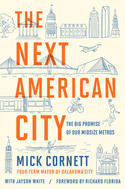Someone who took issue with my treatment of Minneapolis’ attraction issue sent me a link to this Star Tribune piece noting that migration into the region increased last year.
To be clear: this article is from March of this year, so I’m late to the game in analyzing it. But I don’t recall seeing it previously.
Here’s an excerpt: read more »






















